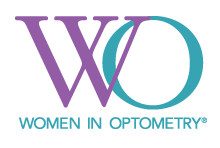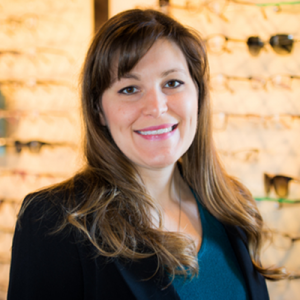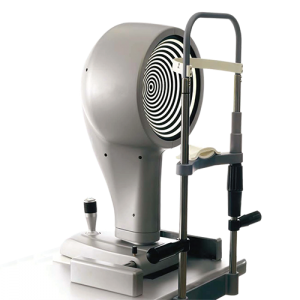
Original Article Published in Women in Optometry
–

After being shut down for two months at the start of the COVID-19 pandemic, Melissa Richard, OD, wanted to make some changes at Spectrum Vision Care in Chalfont, Pennsylvania, the practice she opened in March 2016.
Her first step was to furnish a second exam lane, which would allow her to bring on a second contact lens specialist one afternoon a week to help accommodate the growing patient load. She had her eyes on the Marco TRS automated refraction system, and the built-in social distancing features made it an obvious fit.
She moved her manual phoropter to her new second lane, but the Marco lane is by far her preferred exam room. “I use that second room more for medical services and consults,” she says. She wanted Marco anyway because that was the system she used in her previous setting and was already “sold” on its quality and benefits, “and it’ made a lot of sense coming back after COVID-19,” she says. “It’s faster, and I can hit one button that allows patients to compare what today’s prescription looks like compared to what their current prescription is. It’s been really great for sales of eyeglasses,” she says. Without having to dial in the changes and have patients try to compare those, “this feature provides an instant ‘oh wow’ from my patients,” she says.
However, the added benefit of being able to conduct this refraction process from a distance made her and her patients feel much more comfortable. “I can operate the TRS from six feet away, and patients love that.”

A SECOND UPGRADE
At the same time that she was making these changes in the summer of 2021, she also added the Phoenix Meibography Station from Marco. The unit has a topography workstation, and she wanted a topographer to help provide additional clinical data to her contact lens specialist. But she quickly realized that the Phoenix would help her with the dry eye patient management, too. “I remember thinking that the Phoenix dry eye module would be great once I could start my dry eye patients back,” she says.
The Phoenix provides her with a dynamic view of non-invasive tear film break-up time with tear meniscus height imaging and measurement. She can image the tear film dynamics as a video, too.
Dr. Richard began to realize how much more prevalent dry eye signs and symptoms were once she started screening all of her patients with the neurolens lifestyle questionnaire. “There’s a question on dry eye in there, and if dry eye is a patient’s primary issue, we will bring that patient back in for dry eye testing,” she says.
“Patients don’t always tell me about their dry eye symptoms unless we specifically ask,” she says. The lifestyle questionnaire has them grade their dry eye signs on a scale of 1 to 5. “If it’s a 3, 4 or 5, I’d call that significant,” she says.
As a result, she’s seeing about a three-fold increase in Meibomian gland dysfunction and blepharitis, much of it due to increased screen time and mask-wearing, as well as more chalazion and stye. “We’re able to do infrared meibography and start addressing tear volume,” she says.
She shares the report from the Phoenix, which “validates for the patient what they’re feeling and helps monitor improvement,” she says. It also helps improve compliance and patients’ willingness to return when they can see objective improvement that coincides with how much better they’re feeling.
EFFICIENCIES
Dr. Richard says that her Marco technology has added efficiency to her practice. The Phoenix Meibography Station with a topography workstation is in the pretesting area while the TRS is in the exam lane. Because the TRS is linked to her practice management system, there are fewer transcription errors and fast transmission of the results to whomever needs them. “Patients are impressed with the technology. I’d say that the TRS 6100 is the patient favorite,” she says.
That could be because nearly every patient interacts with it, unlike advanced equipment used to detect and monitor ocular diseases. Plus, patients love that they can skip the “1 or 2” questions that adds stress for so many.
Dr. Richard became a Vision Source® member when she opened, noting that the buying power helped her stretch her opening budget.



